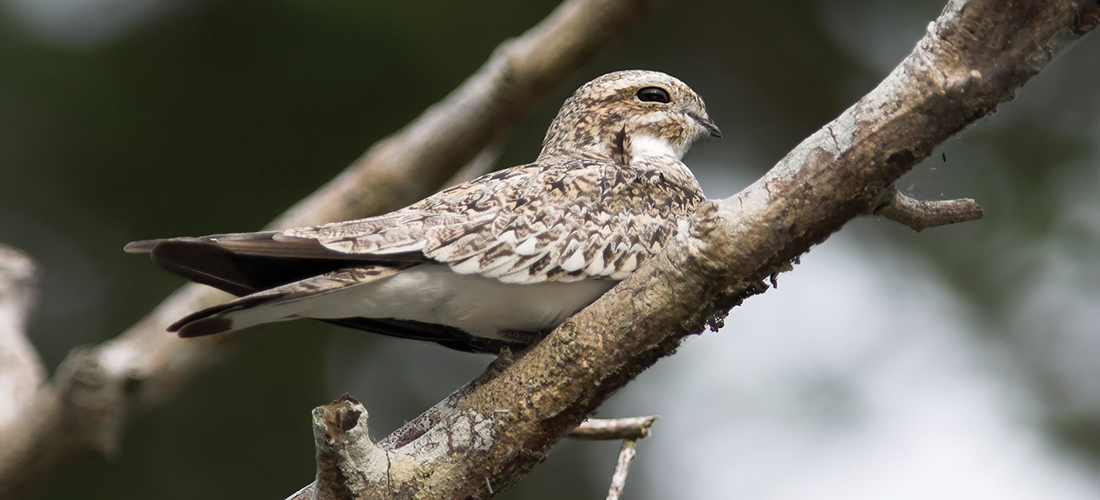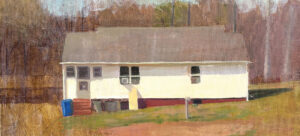
Nighthawks
But not the Edward Hopper kind
By Susan Campbell
The common nighthawk is neither “common” nor a “hawk.” Found in the Sandhills and Piedmont of North Carolina, these large birds feed exclusively on insects and actually do so at night. They use their large mouths to catch prey. Beetles and other insects are instantaneously intercepted and ingested by way of the birds’ oversized mouths. Nighthawks are unique in that they literally fly into large insects. Because their weak feet are designed purely for perching, they do not grab at them as true hawks do.
These medium-sized birds are active mainly at dawn and dusk when beetles and other big insects are also most active. Due to their terrific night vision, nighthawks hunt effectively in darkness, though they may even feed during the day, especially when they have young to provide for. In early summer, cicadas, grasshoppers, larger wasps and true bugs are abundant and, given their aerodynamic prowess, nighthawks are very successful predators at any hour.
As one of many survival tactics, common nighthawks spend the day perched horizontally on a pine branch. Invisibility is the goal during daylight hours. Although their vision is not compromised, they have a better advantage when light intensity is low. The mottled black, gray and white feathering is very hard to see regardless of the time of day, but their characteristic low “peee-nt” call and erratic moth-like flight is distinctive.
Common nighthawks’ nests are well camouflaged. Females simply scrape a spot to create a nesting area. Their speckled eggs blend in well with the mineral soil and miscellaneous debris typical of native arid terrain. Females are known to perform a feeble “broken wing” display if they are disturbed. This act is the only defense they have to draw potential predators away from the eggs or young.
More likely, common nighthawks’ presence will be given away by males “booming” in the early morning over high quality open habitat. The unique noise they produce comes from air passing over the wing feathers of breeding males — not vocalizations — as they move through the air.
Amazingly, nighthawks are one of a handful of bird species that will also nest on flat rooftops. As large fields become scarce, common nighthawks are more prone to using large artificial spaces. These birds can easily support a family on the associated abundant flying insects found in open foraging habitat such as agricultural fields or some athletic venues, so it’s not unusual to see or hear nighthawks at summer baseball games or early fall football games throughout the region. They are capitalizing on the abundant prey associated with the evening floodlights at stadiums and other outdoor sites.
The species is found in many open areas in the eastern United States in summer, and so it is no surprise that common nighthawks begin to move south in late summer in large flocks. They migrate long distances to winter destinations in Central America and northern South America. Large numbers can be seen feeding in the evening in August and early September, so there’s plenty of time left to spot a nighthawk before cooler weather sets in. OH
Susan Campbell would love to receive your wildlife sightings and photographs at susan@ncaves.com.





